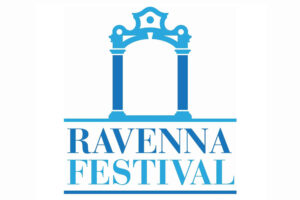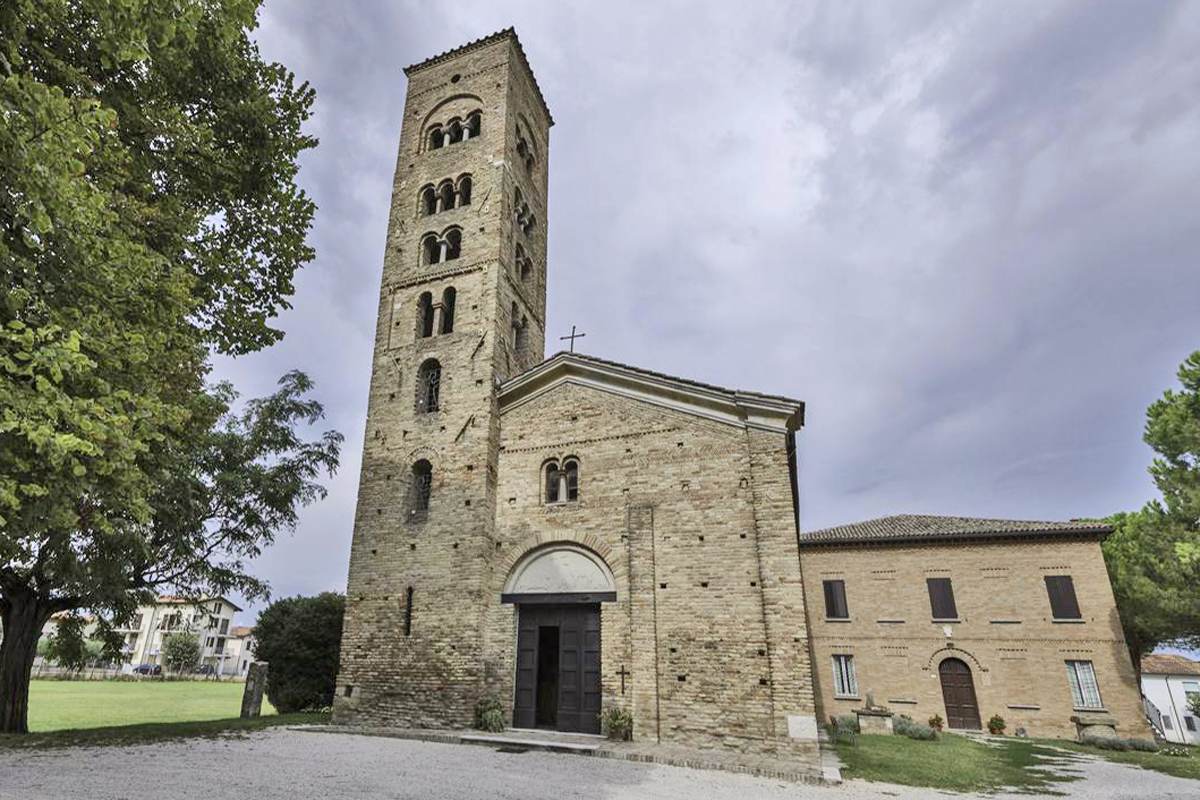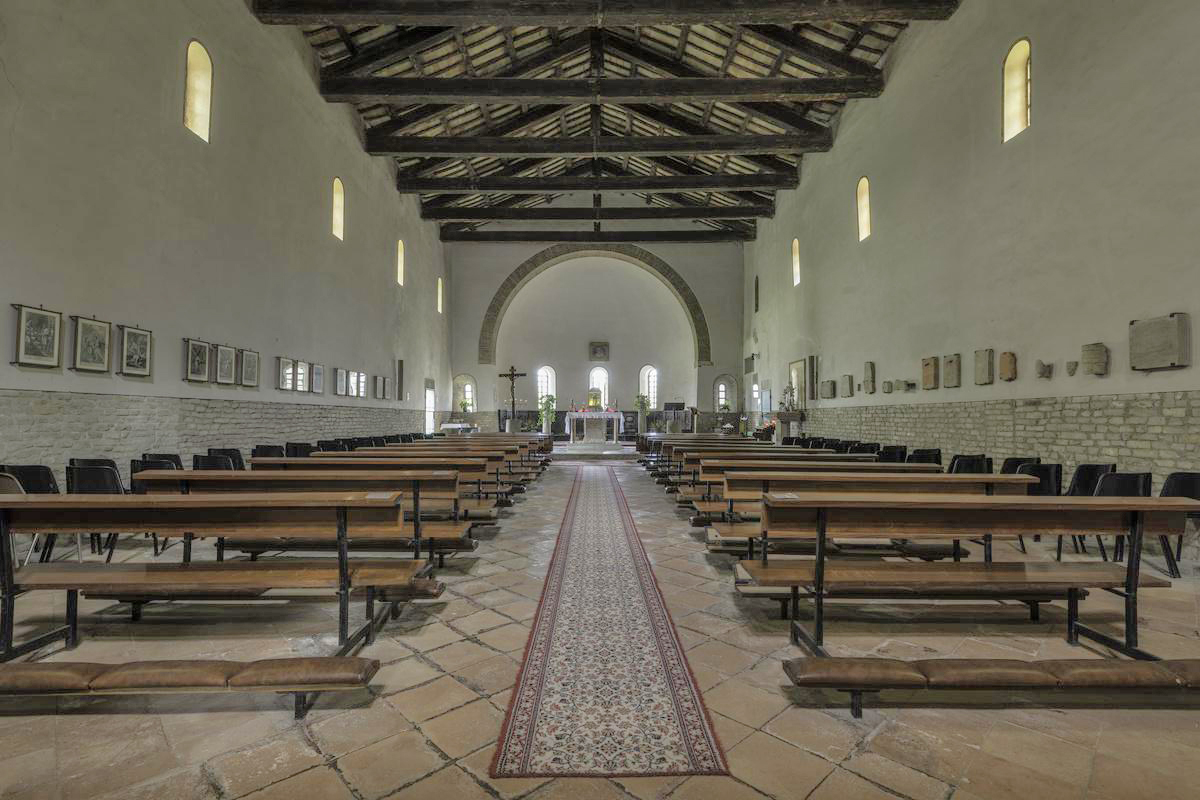About 14 kilometres from the centre of Ravenna, in the village of Campiano, is the PARISH CHURCH OF SAN CASSIANO “IN DECIMO”, standing out in the surrounding countryside.
This religious building – located along the ancient via Petrosa (a stretch of road that was probably built to connect Ravenna and the via Emilia) – bears the name of the 10-miles distance between Forlimpopoli (the starting point of the road) and the church itself.
The church is dedicated to San Cassiano, martyr of the 4th century AD, who is also depicted in the mosaics of the Basilica of Sant’Apollinare Nuovo.
The origin of the parish church
First evidence of this church dates back to the 9th century AD. Even if the original structure was maintained, the building underwent several changes over time and was reconstructed and modified until the 18th century.
This small church, which differs in its structure from the recurring model found in the Ravenna countryside, has a single nave and ends with a large semicircular apse inside and polygonal exterior.
In the left corner stands a quadrangular bell tower (10th century AD) adorned with six rows of multi-light windows.
The church is known by everyone as “la Bartolla”, because on one of the walls there is a fragmented statuette, initially thought to be dedicated to a female figure, but which actually depicts a male pagan deity, probably the god Apollo.
The bell tower differs from the others in the area because of the interesting insertion in the walls of polychrome ceramics of Byzantine manufacture which, in technical terms, are known as ‘basins’, an ornamental form typical of buildings of worship in the Tuscan area.
The upper part of the facade – with the central mullioned window decorated with two brick masks – date back to the 12th century, while the interesting remains kept inside the church date back to the Early Middle Ages.








